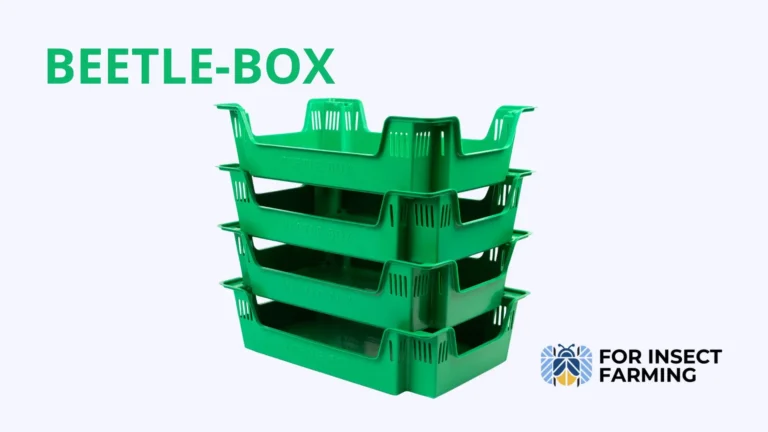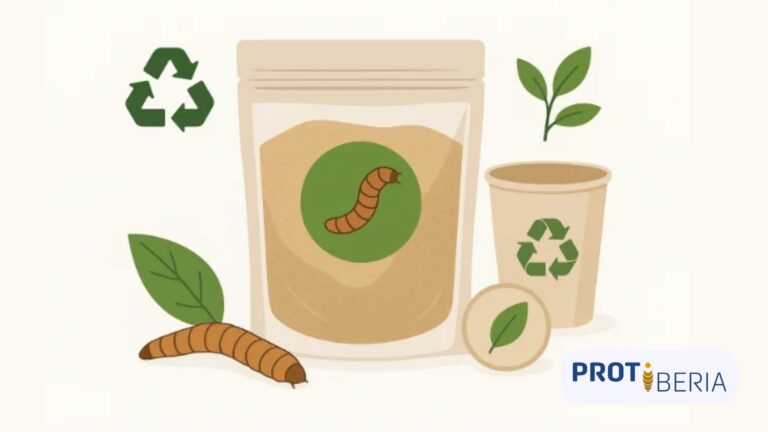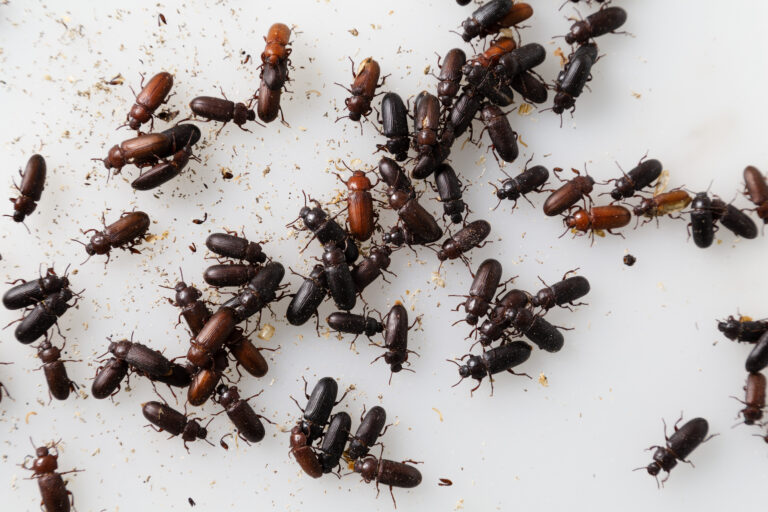| The use of the yellow mealworm (Tenebrio molitor) is a way to revolutionize the food industry by betting on a much more sustainable production model that respects our planet, but do we really know what this insect is like and what its life cycle is? |
Tenebrio molitor, commonly known as the yellow mealworm, is a beetle of the Insecta class and the Tenebrionidae family. This insect has a holometabolous development, which means that it has 4 phases: egg, larva, pupa and imago.

Throughout its life cycle, care and breeding conditions must be adapted to meet the needs of each phase to ensure the well-being of the insect and its proper development.
Life cycle of Tenebrio: the mealworm that is revolutionizing the food industry in a sustainable way
Like the vast majority of arthropods, mealworms are oviparous, that is, they lay eggs. These eggs are white, bean-shaped and the size of a speck of dust. Once the beetle has laid its eggs, they hatch within 1 to 2 weeks and the baby larvae emerge from then, beginning the larval phase, which is the most interesting stage since it is at this stage that the insect is used for feed and food.
In this larval phase, the insect remains between 10 and 14 weeks. During this time, the larva grows and molts, up to 12 moults before becoming pupae, also known as chrysalises.
As it grows, it excretes what we know as frass. This byproduct can be used as a powerful ecological fertilizer that increases the development of plants, protects them against pests, improves the absorption of nutrients and improves the physical and chemical characteristics of the soil.
It should also be noted that not all larvae will be used for feed or food; a considerable percentage will be used to replace the beetles that are discarded. The larvae selected for this purpose will move on to the next phase: metamorphosis.
The pupa or chrysalis is the transitional stage between the larval phase and the adult phase. In this stage, the insect remains immobile and feeds on the reserves it has accumulated in the previous phase.
The pupae must be handled with great care as they are very delicate. If everything goes in right direction, the beetles will emerge approximately 1 week later. When the beetles emerge from the pupae, they are whitish in colour, but as time goes by, they acquire a brownish tone that turns black after a week.
At this stage, the beetle is sexually active (except for the first few days of life) and a female can lay up to 500 eggs. This final stage of the life cycle lasts between 8 and 12 weeks. Like the other by-products of mealworm breeding, the beetle’s exoskeleton can be revalued, since it is used to extract chitin and chitosan, substances in high demand in the cosmetics and pharmaceutical industries, among others.

Environmental conditions for breeding Tenebrio molitor
During all phases of the life cycle, insects must be kept in controlled environmental conditions, where parameters such as temperature, humidity and CO2 are modified depending on the stage they are in.
The optimal conditions are between 25 and 30ºC and a relative humidity of 50-70%. It must be taken into account that mealworms need external heat sources to reach the optimal body temperature. Therefore, the duration of the life cycle is totally dependent on temperature, and can vary between 100 and more than 600 days. In the same way, relative humidity influences the well-being of insects, being closely linked to their fertility and growth.
A solution to change the world
At Protiberia we face the challenges of the food industry that concern us the most, ensuring animal welfare, being faithful to our values and working with the highest standards of quality and food safety. We want to change things with the mission of making the world of tomorrow better than the one of today.
If you want to know more about our products, click here.



